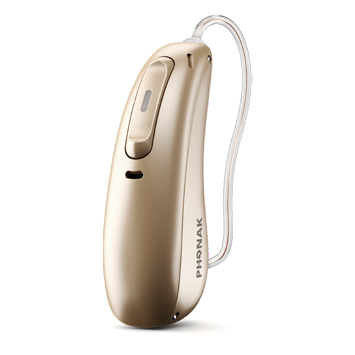
About Hearing Aids
There is a wide assortment of styles and technologies available in hearing aids today. The type that is most suitable for you is determined by your degree of hearing loss and your lifestyle. After a complete hearing test, you and your hearing health care provider will discuss the various options that would work the best for you.
Our History with Hearing Aids
Hearing Instrument Services have been fitting hearing aids for 50+ years, servicing our community for all of their hearing needs. The following images show a timeline of the hearing aids we’ve serviced over the past 50+ years.
OPEN FIT
Open fit hearing aids are small devices placed behind the ear with a slim tube attached to the device and inserted down the ear canal. They are non-occluding. This style is good for people with a high frequency hearing loss or mild to moderate hearing loss. They help you hear better when background noise is present.
BEHIND-THE-EAR (BTE)
BTEs sit comfortably behind your ear while amplified sound passes down a tube to a customized earmold that fits securely into your ear. Because they are larger, BTEs can accommodate bigger batteries for longer life and larger amplifiers for maximum amplification. BTEs are suitable for mild to profound hearing losses.
BEHIND-THE-EAR (BTE) MICRO
BTE Micros sit comfortably behind your ear while amplified sound passes down a tube to a customized earmold that fits securely into your ear. BTEs are suitable for mild to profound hearing losses.
IN-THE-EAR (ITE)
ITEs are custom-made to fit securely in your outer ear, ensuring optimum performance and maximum comfort. ITEs are suitable for mild to severe hearing losses.
IN-THE-CANAL (ITC)
ITCs are custom-made to fit almost entirely inside your ear canal, making them difficult to notice. ITCs are suitable for mild to moderately-severe hearing losses
COMPLETELY-IN-THE-CANAL (CIC)
CICs fit deep inside your ear canal so that they’re practically invisible. Benefits include cosmetic appeal, reduced feedback and excellent sound quality. CICs are suitable for mild to moderately-severe hearing losses.
Digital Hearing Aids
Sophisticated hearing aids are now available that employ digital signal processing and directional microphones. These new hearing aids provide excellent sound quality and have been shown to provide significant benefit in difficult listening situations. These hearing aids contain a computer chip and are set the Health Care Professional to match your hearing loss using a computer.
Assistive Listening Devices & Accessories
Sophisticated hearing aids are now available that employ digital signal processing and directional microphones. These new hearing aids provide excellent sound quality and have been shown to provide significant benefit in difficult listening situations. These hearing aids contain a computer chip and are set the Health Care Professional to match your hearing loss using a computer.
Two ears are better than one
The human brain requires information from both ears in order
to accurately perceive the sounds of our environment.
Because the human auditory system is designed to pick up sounds from both ears, many people find that they hear better with two hearing aids than they do with only one. Therefore, when a hearing loss is identified in both ears a bilateral hearing aid fitting is recommended.
A bilateral hearing aid fitting is when a hearing aid is worn in both ears. The primary benefits to a bilateral hearing aid fitting include improved sound localization, and improved listening in noise.
Book your Free Hearing Evaluation Today!


















